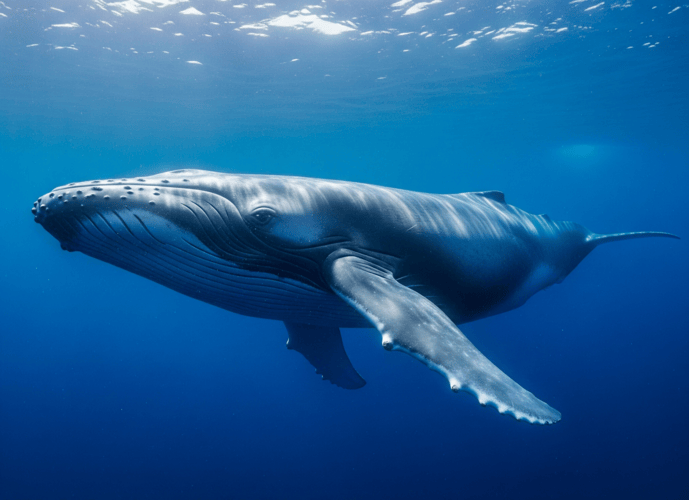Bats: How Nature’s Flying Marvels Defy Evolution
Imagine an aircraft that can navigate in complete darkness, execute hairpin turns at full speed, and land upside down with pinpoint precision—all while hunting moving targets smaller than a dime. Now imagine this aircraft can regulate its own temperature, hibernate for months, and manufacture its own replacement parts. This isn’t science fiction; it’s the everyday reality of bats—creatures so remarkably engineered they challenge our most fundamental assumptions about biological origins.
With over 1,400 species representing nearly 20% of all mammals, bats dominate the night skies on every continent except Antarctica. Yet their very existence poses profound questions for evolutionary theory. The integrated complexity of bat systems demonstrates what scientists call “irreducible complexity”—biological machines so intricate that all components must function simultaneously for survival, pointing unmistakably toward intelligent design.
THE ECHOLOCATION MIRACLE: NATURE’S MOST SOPHISTICATED GUIDANCE SYSTEM
Perhaps no biological system better illustrates design complexity than bats’ echolocation. This living sonar system requires the seamless coordination of multiple highly specialised components, each precisely calibrated for optimal performance.
The Engineering Marvel: Bats produce ultrasonic calls through specialised larynx structures, generating frequencies between 14-100 kHz—well beyond human hearing range. These sounds must be produced with split-second timing and precise frequency modulation. The returning echoes are captured by extraordinarily sensitive ears capable of detecting sounds 10 million times fainter than the human hearing threshold.
By the Numbers: Bat Echolocation Precision
- Detection range: Up to 50 metres for large objects
- Frequency range: 14-100 kHz (human hearing is up to 20 kHz)
- Processing speed: 50-200 calls per second during hunting
- Accuracy: Can distinguish wires 0.05 mm apart
- Response time: Adjusts flight path within 30 milliseconds
But the true marvel lies in the neural processing. A bat’s brain must interpret these acoustic signals in real-time, constructing detailed 3D maps of its environment while simultaneously controlling flight, tracking prey, and avoiding obstacles. The mathematical precision required rivals our most advanced computer systems.
The Irreducible Complexity Problem: Here’s where evolutionary theory encounters a fundamental obstacle. Echolocation cannot develop gradually—it’s an all-or-nothing system. A partially developed echolocation system provides no survival advantage; in fact, it would be detrimental, wasting precious energy while providing unreliable information. The bat needs sophisticated sound production, acute hearing, and complex neural processing circuits working in perfect harmony from day one.
Consider the “half-a-wing, half-a-sonar” dilemma: What selective pressure could drive the simultaneous development of both flight capability and echolocation? Neither system provides survival value without the other being fully functional.
AERODYNAMIC PERFECTION: ENGINEERING BEYOND HUMAN ACHIEVEMENT
Bat flight represents a masterpiece of biological engineering that surpasses human aviation technology in numerous ways. The bat wing isn’t simply a membrane stretched between bones—it’s a sophisticated, adaptable air foil capable of real-time shape modification.
Wing Design Complexity: The wing membrane contains multiple layers with precisely controlled elasticity, allowing for optimal aerodynamic efficiency across varying flight conditions. The bone structure creates a multi-jointed framework where each “finger” can adjust independently, enabling unprecedented manoeuvrability. This system integrates perfectly with circulatory and nervous networks that provide real-time feedback and control.
Unlike birds with rigid feathers, bats can modify their wing shape continuously during flight, optimizing lift, reducing drag, and executing manoeuvres impossible for conventional aircraft. Some species can hover like helicopters, while others achieve speeds exceeding 100 mph.
The Fossil Record Enigma: Perhaps most troubling for evolutionary theory is the sudden appearance of fully-formed bats in the fossil record. The earliest known bat fossils show creatures with complete flight capability and fully developed echolocation systems. No transitional forms exist showing gradual wing development or primitive echolocation—bats appear in the geological record as sophisticated flying machines from their first appearance.
METABOLIC MARVELS: BIOLOGICAL ENERGY MANAGEMENT
Bats demonstrate metabolic capabilities that would make engineers envious. Their energy management systems operate with precision and efficiency that challenge our understanding of biological limits.
Extreme Metabolic Flexibility: During active flight, a bat’s heart rate can reach 1,000 beats per minute—five times faster than a hummingbird’s maximum. Yet the same creature can slow its metabolism to near-death levels during hibernation, surviving months without food while maintaining essential biological functions. This dramatic metabolic range requires sophisticated regulatory systems that coordinate heart rate, breathing, body temperature, and cellular energy production with split-second precision.
Temperature Control Precision: Bats regulate body temperature through their wing membranes, which contain intricate vascular networks functioning as biological radiators. Counter-current heat exchange systems prevent heat loss during cold weather while enabling rapid cooling during intense flight. This thermoregulatory system integrates seamlessly with echolocation and flight control—warm wings are more flexible and responsive, while proper blood flow maintains acoustic sensitivity.
INCREDIBLE DIVERSITY: RAPID SPECIALISATION
The diversity of bat species presents another challenge to gradual evolutionary processes. From tiny bumblebee bats weighing less than a penny to giant flying foxes with six-foot wingspans, bats have “rapidly” diversified into ecological niches requiring highly specialised adaptations.
Specialised Feeding Strategies: Vampire bats possess anticoagulant compounds in their saliva more effective than medical blood thinners, plus heat sensors for locating blood vessels and social behaviours for sharing meals with unsuccessful colony members. Nectar-feeding bats evolved alongside specific plant species, developing tongue structures and flight patterns precisely matched to flower architectures. Fruit bats navigate using both echolocation and exceptional vision, selecting fruits at optimal ripeness stages.
Each specialisation requires coordinated changes across multiple biological systems—digestive enzymes, tooth structures, wing configurations, metabolic rates, and behavioural patterns. The mathematical probability of beneficial mutations occurring in precise coordination across these systems challenges statistical credibility.
SYSTEM INTEGRATION: THE HALLMARK OF DESIGN
What truly distinguishes bats is the seamless integration of multiple complex systems. Echolocation coordinates with flight control, which coordinates with metabolic regulation, which coordinates with thermoregulation, which coordinates with social behaviour and reproductive timing. This level of system integration requires what engineers call “top-down design”—a comprehensive plan implemented simultaneously across multiple subsystems.
The developmental precision required to construct such integrated complexity from a single fertilised cell involves genetic programming of staggering sophistication. Thousands of genes must activate in precisely coordinated sequences, with timing mechanisms that ensure proper system integration during embryological development.
BATS: NATURE’S FLYING MARVELS—THE DESIGN INFERENCE
When we observe integrated complexity, precise coordination, and optimised performance in human technology, we invariably infer intelligent design. Bats demonstrate these same characteristics at levels exceeding human engineering capabilities. The mathematical improbability of gradual, undirected processes producing such sophisticated biological machinery, combined with the fossil record’s testimony to sudden appearance, points toward a more elegant explanation: purposeful creation by an intelligent designer.
Rather than viewing bats as evolutionary accidents, we can appreciate them as masterpieces of biological engineering—living testimony to the creative genius behind nature’s most remarkable flying marvels. The evidence suggests these creatures were designed to fly, to navigate, and to thrive in the ecological niches they occupy with such remarkable precision.
BATS: NATURE’S FLYING MARVELS—RELATED FAQs
If bats use echolocation, why do they still have eyes? Most bats actually have excellent vision that works alongside their echolocation systems. Fruit bats rely heavily on their large eyes for navigation and food selection, while even echolocating species use vision for long-distance orientation and social recognition. This dual sensory system demonstrates the principle of engineered redundancy—backup systems that ensure survival if one system fails.
- How do bats find mates if they’re active in complete darkness? Bats employ remarkably sophisticated courtship systems involving species-specific echolocation calls, pheromone signals, and elaborate flight displays. Males often establish territories and produce unique “songs” that attract females, while some species gather in massive mating swarms with precise timing mechanisms. The complexity of these reproductive behaviours, perfectly coordinated with seasonal cycles, suggests purposeful programming rather than random development.
- Why do bats need to hibernate instead of migrating like birds? Hibernation represents an extraordinary biological engineering solution to energy scarcity during winter months when insects become unavailable. Unlike simple sleep, hibernation requires precisely controlled metabolic shutdown—heart rates drop from 400 to 25 beats per minute, body temperature falls to near-ambient levels, and breathing virtually stops. This controlled near-death state, with built-in awakening mechanisms, demonstrates biological programming of incredible sophistication.
How do baby bats learn to fly and echolocate? Young bats possess innate flight and echolocation programmes that activate during development, though they refine these skills through practice. Mothers often carry babies during flight, providing real-time “flight training” while the young observe echolocation patterns. The fact that these complex behaviours are largely instinctual, requiring minimal learning, suggests pre-programmed behavioural templates rather than acquired skills.
- Why do bats hang upside down instead of roosting like birds? Bat feet contain specialised locking mechanisms that engage automatically when gripping—they literally cannot let go without conscious muscle effort. This inverted roosting position provides instant take-off capability since bats simply release their grip and drop into flight. The upside-down anatomy, including modified circulation systems that prevent blood pooling, represents purpose-built engineering for this unique lifestyle.
- How do vampire bats survive on blood alone when other mammals need varied diets? Vampire bats possess extraordinary digestive modifications including specialised stomach bacteria, modified kidneys for processing excess iron, and anticoagulant saliva compounds. Their social behaviour includes food sharing with unsuccessful hunters, ensuring colony survival through cooperative mechanisms. This level of physiological and behavioural specialisation for such a narrow diet suggests intentional design for a specific ecological role.
Do all bats carry diseases dangerous to us? While bats can carry various viruses, the vast majority pose no threat to us through normal contact. Their robust immune systems actually make them ideal natural reservoirs that contain pathogens without succumbing to disease. This immune sophistication, allowing coexistence with multiple viral loads while maintaining perfect health, demonstrates biological engineering that far exceeds human medical capabilities.
BATS: NATURE’S FLYING MARVELS—OUR RELATED POSTS
- Tadpole to Frog: How Metamorphosis Reveals Divine Programming
- Honeybees: 5 Ways Nature’s Unsung Architects Point to the Creator
- Testament to Design: The Engineering Marvel of Elephants
- Blue Whales: Mammoth Icons of Intelligent Design
- The Woodpecker’s Design: How Nature’s Headbanger Defies Evolution
- Too Perfect to Be Random: The Giraffe’s Remarkable Design
- Evidence that Glows: How Bioluminescence Reveals Design
Editor’s Pick

Blue Whales: Mammoth Icons of Intelligent Design
Imagine an animal so massive its heart alone weighs as much as a small car, yet so precisely engineered it [...]

Do Unbelieving Kids Disqualify Church Leaders?
REFORMED PERSPECTIVES ON 1 TIMOTHY 3 AND ELDER QUALIFICATIONS Every pastor knows the heartbreak. A faithful elder who has served [...]

Why Did God Kill Onan? Wasn’t the Punishment Disproportionate?
The story of Onan in Genesis 38 troubles many. Why would God strike down a man for what seems like [...]

Is God Preparing Me for Ministry? How May I Know for Sure?
The question haunts many faithful believers. You’re serving faithfully in your local church, perhaps teaching Sunday school or leading a [...]

Ephesians 1:13: Was the Spirit’s Indwelling Promised of Old?
When Paul declares believers are “sealed with the promised Holy Spirit” in Ephesians 1:13, one word jumps off the page: [...]

Monergism vs Synergism: Is Salvation God’s Work Alone?
When God saves us, does He do it alone, or does He need our help? The question isn’t mere theological [...]

Was Jesus Abandoned by the Father on the Cross?
WHY WE ANSWER IN THE NEGATIVE “My God, my God, why have you forsaken me?” These words from the cross [...]

Why Do Some Respond to God’s Call While Others Don’t?
THE REFORMED VIEW ON OUTWARD AND INWARD CALLS EXPLAINED Picture this: Two neighbours attend the same church service. They hear [...]

Does Ocean Salt Content Prove a Young Earth?
A COMPELLING LOOK AT MARINE CHEMISTRY AND EARTH’S TIMELINE The Salt Question That Challenges Deep Time: If Earth’s oceans have [...]
Noah’s Flood: Where Did All the Water Come From? And Go?
The question hits every Bible-believing Christian at some point: “If Noah’s flood covered the whole earth, where did all that [...]






